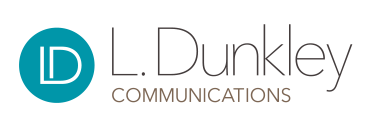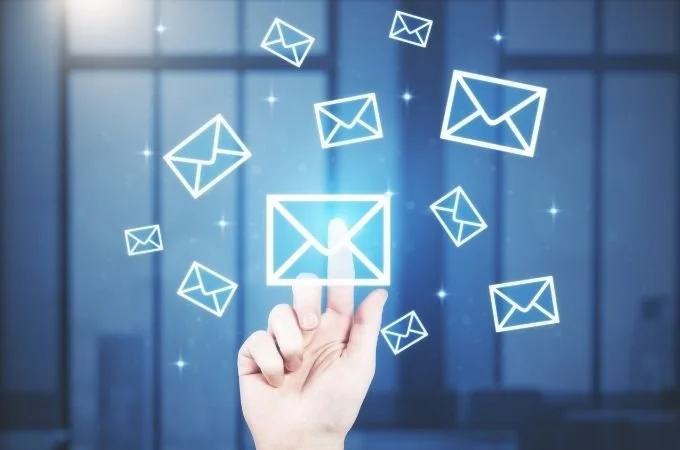How to set up a welcome email sequence.
There are various types of emails to use across your customer's journey. Still, the welcome emails are arguably the most important as it offers the opportunity to provide an excellent first impression to win over new subscribers and set the stage for a long-lasting and profitable business relationship.
Emails are an effective way to communicate with your customers. Research shows there are 4B email users worldwide and growing. 99% of email users also check their inboxes every day. And with an average of $42 for every $1 spent, which is a significant return on investment, email marketing proves to be an integral part of any sales and marketing strategy.
Email marketing is permission-based, which means your customer opted-in to receive messages from you directly into their inbox. They chose you because they believe it is worth giving you their email to obtain what you have to offer. Treat this consent with the utmost respect because, based on CASL requirements, they can opt-out of receiving information from you at any time.
WHEN BUILDING OUT YOUR PRIMARY EMAIL MARKETING AUDIENCE (SUBSCRIBER LIST), BE SURE TO TAKE THE TIME TO DESIGN AND SET UP YOUR WELCOME EMAIL SEQUENCE.
An email sequence is a series of email templates designed with customized content and scheduled to automatically send (auto-responder) to the recipient based on their actions (triggers). Email sequences help move the recipient through a defined email marketing funnel to achieve a particular goal.
WHAT IS A WELCOME EMAIL SEQUENCE?
The welcome email sequence helps onboard your new subscribers. The initial email is triggered when someone subscribes to your email list. A welcome email marketing funnel typically includes an automated email flow and landing pages to provide the correct information at the right time as they go from the initial subscribe form to the final welcome email. Create your email template designs and triggers through your Email Marketing Software, where you manage your audience list.
Now you can begin sending email campaigns and newsletters to your subscribers to provide them with valuable free content and promote your products and services.
Here are steps to setting up an automated welcome email marketing sequence.
1. SUBSCRIBE FORM
First, you need to ensure that your 'subscribe to our email list' forms are available on your website and other appropriate marketing channels.
2. SIGN UP - THANK-YOU & CONFIRMATION LANDING PAGE
Your confirmation landing page is where you can choose to have your subscribers redirect to a custom thank you page. The purpose of this page is to say, 'Thank you for subscribing. Let them know the following steps to confirm their subscription. If you choose to send a confirmation email to have them verify their email address, let them know this is coming, and check their junk mail if they do not receive it. You can also remind them what they will be receiving as a subscriber.
3. SIGN UP - DOUBLE OPT-IN / CONFIRMATION EMAIL
The confirmation email is where your list subscribers receive an email to confirm their email addresses. Some people choose a simple, single opt-in option, where no verification of email is required. However, there are advantages to using a double opt-in.
Sending a confirmation email improves the deliverability rate.
When your subscriber clicks on the call-to-action in the confirmation email, it sends their ESP (email service provider) a signal that they accept your email as a trusted source. Offering the ESP this signal means that the next time you send an email to this recipient, it has a higher chance of reaching their inbox rather than being redirected to SPAM. Having them confirm their email also helps to keep your email list clean from any incorrectly entered emails or unwanted spam. Another confirmation call-to-action option is to 'reply to this email', which sends a trusted signal to the ESP.
To improve your deliverability rate, even more, you may also want to include instructions to have them add your email to their 'safe sender' list.
The most important part of the confirmation email is your call to action to 'please confirm your email address' or 'please confirm your subscription' with a button saying 'yes, subscribe me to your list'. It is also good to add text with instructions if they received this email by mistake, such as 'If you received this email by mistake, simply delete it. You won't be subscribed if you don't click the confirmation link above.
Be sure to include your contact details in case they have any questions. Optional, but nice to have, is a visual and your logo to make the email eye-catching and easily recognizable that it came from your email list to which they just subscribed.
4. WELCOME - EMAIL(S)
Once the subscriber confirms their email, you can set it up to automatically receive a welcome email.
When a new subscriber joins your list, the first welcome email should provide them with what they expect. If you are offering a sign-up 'freebie', be sure to include that in your first welcome email. A welcome email also provides an opportunity to talk a little more about your company. Offer your subscribers information about what they can expect as part of your list; type of emails, frequency, perks, and ways to unsubscribe or change their preferences.
You may choose to have one welcome email sent or schedule a series of welcome emails spaced out over time. You can also set up various welcome emails sequences based on established actions the recipient takes.
For example, if you own a pet store and your first welcome email asks them to select if they have a cat, or dog, or both. You can then send them a follow-up email, including a list of resources, tips and related services or upcoming specials based on their selection. As part of that email, you can encourage them to 'subscribe to our VIP list to get an additional 10% off and a gift on your pet's birthday.
On average, sending a series of welcome emails yields an average of 51% more revenue than a single welcome email. [3]
When to schedule welcome emails?
Remember, as part of the welcome series; not everything has to be sent right away. You can schedule a welcome email when it makes the most sense. For example, if the subscriber did not open one of the emails within the sequence, you can set up a trigger to send a reminder email a couple of days after the original email was sent. Be sure to test the timing and adjust as needed based on open rate and engagement success.
5. WELCOME [LANDING PAGE] - OPTIONAL
As part of your welcome series, you can include a link in your final welcome email to direct your subscribers to a landing page where you can offer more information, promotional content and get to know your subscriber. Here are a few ideas -
Tell them more about your business.
Offer a special promotion.
Get started! If you offer an incentive such as a free trial or subscribe to a blog, direct them to a landing page to begin the next part of their journey. If you choose to add options in the final welcome email, you can offer a couple of lan ding pages based on their choice.
Get to know your subscriber!Ask them to provide more information about themselves & possibly select email list preferences, including types of content and frequency.
Sign up for a VIP List
Enter a contest - This may be scheduled as an ongoing contest or for a limited time only. To continue with the pet store example, your final welcome email may include a call to action that directs the recipient to a landing page where you ask them to join your VIP membership. Explain the membership benefits and have a form included to gather more information about their pet. Once the form is completed and the submit button is clicked, this will then trigger the next sequence of emails for the VIP membership campaigns.
A successful email marketing strategy can help generate revenue and build lasting relationships with your customers.
Review your customer journey and create automated email sequences and campaigns to build your audience and then nurture and convert them into customers. Always look for opportunities to provide the right information at the right time, leveraging email marketing tools and features to give your customers an exceptional experience throughout their journey with your brand.
REFERENCES
Email Marketing Statistics 2020 - https://sproutsocial.com/insights/free-email-marketing-tools/
[3] https://mailchimp.com/resources/make-lasting-connections-with-welcome-emails/
Google's bulk email user guidelines says "Google weighs several factors to judge whether emails deserve replies, including the frequency of previous interactions between a sender and recipient. When applicable, it reminds people they haven't replied yet and prompts them to consider doing so."

